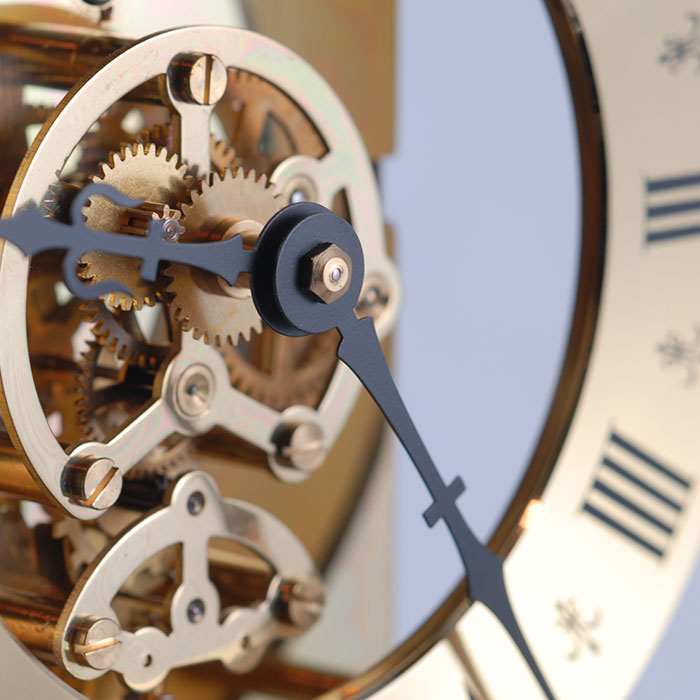I have set up thousands of clocks on outside walls and have never heard a complaint from a single customer that it has caused any kind of problem.
Pendulum wall clock has two winding holes.
The hole on the left is used to power the strike train which make the clock strike at the top of the hour.
Timepieces have only one winding hole in the face because they do nothing but tell time.
If a clock does not strike a gong on the hour it is technically called a timepiece.
Winding holes in clock faces are for different functions of the clock.
Insert the winding key into the holes located in the dial face.
Most clocks are 8 day clocks which only need to be wound once a week.
Clocks with three winding arbours chime on the quarter hour making a musical tone.
A clock that strikes on the hour has two winding holes one for keeping time and one for striking.
Wind the other one or two winding points the same way if your clock chimes on the hour or quarter hour.
Winding holes in clock faces.
If there are 2 holes it means that it is a time and strike clock that is it strikes the appropriate hour on the hour and either a bell or strike on the half hour there are always exceptions such as this two train westminster chime clock or a time only clock with an alarm arbour.
Windup clocks and keys clocks that require actual winding will have anywhere from one to three winding holes on the body of the clock often in the back facing.
If there are two holes one is for the time spring and one is for the hourly chime.
Depending upon the model of your clock there can be 1 2 or 3 winding key holes.
If there is one hole it is a time only clock.
If your clock is cable driven you will wind all three weights with a crank key.
Do this every seven days to prevent the clock from stopping or losing time.
I have made an innumerable number of house calls over the last thirty two years because of this myth.
For clocks with hanging weights raise the weights using the crank.
Generally speaking if the clock has a single hole that hole controls the main time spring.
If your clock has two winding pegs the left one typically works the strike or chime while the right wind manages the clock s timekeeping.
Turn the key clockwise until the spring becomes tight and will not turn further.
To prevent over winding your cables allow the entire pulley to be visible under the face of the clock.
This is a time and strike clock.
Winding the arbor in this hole will give the clock power to keep time.






























